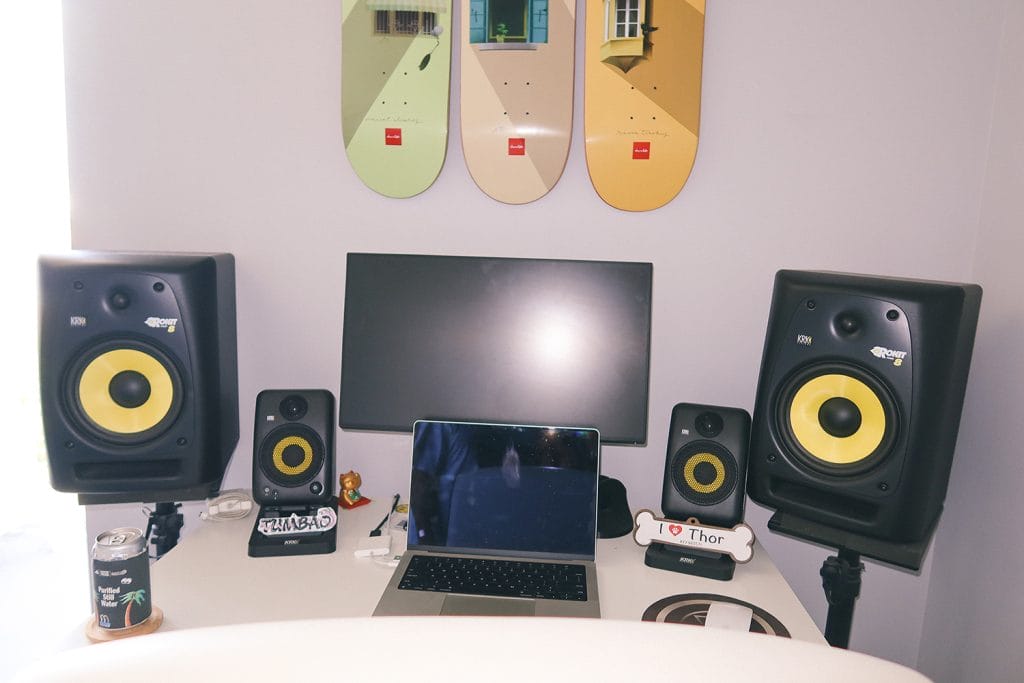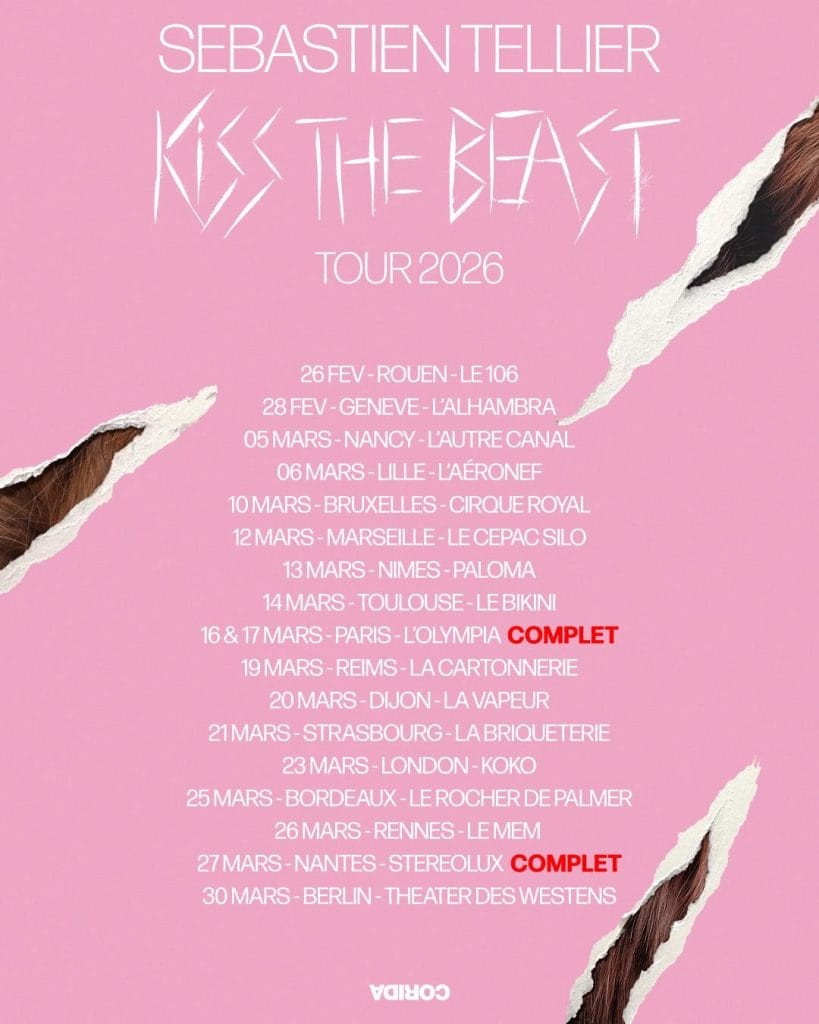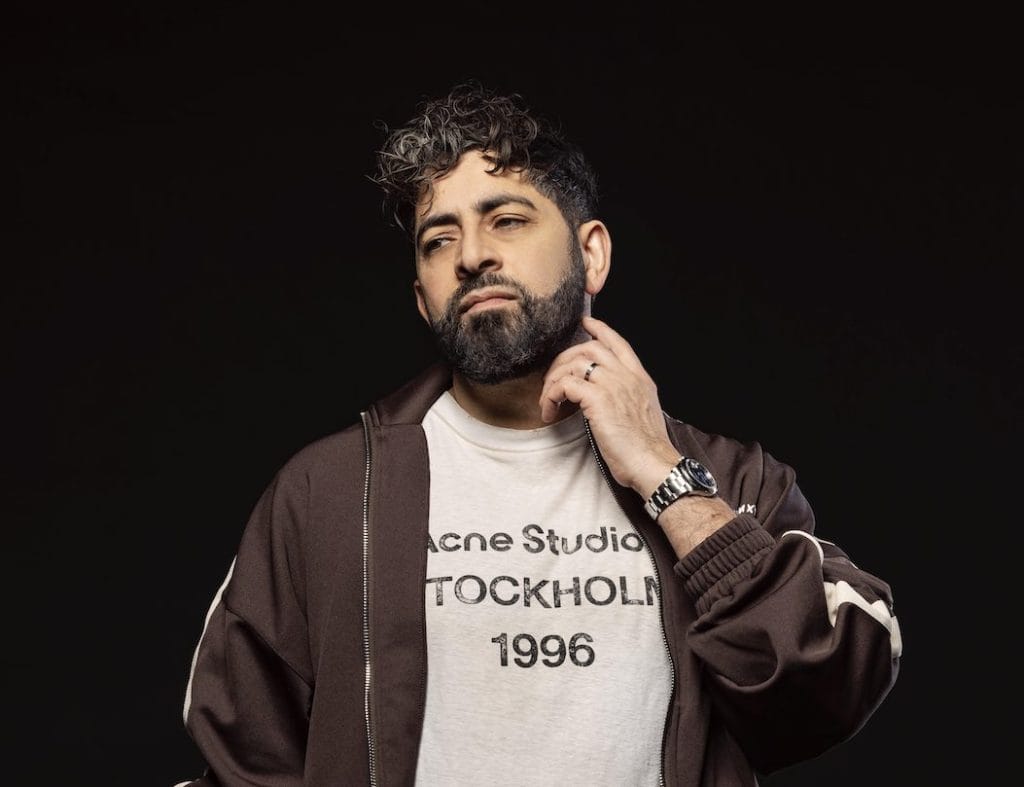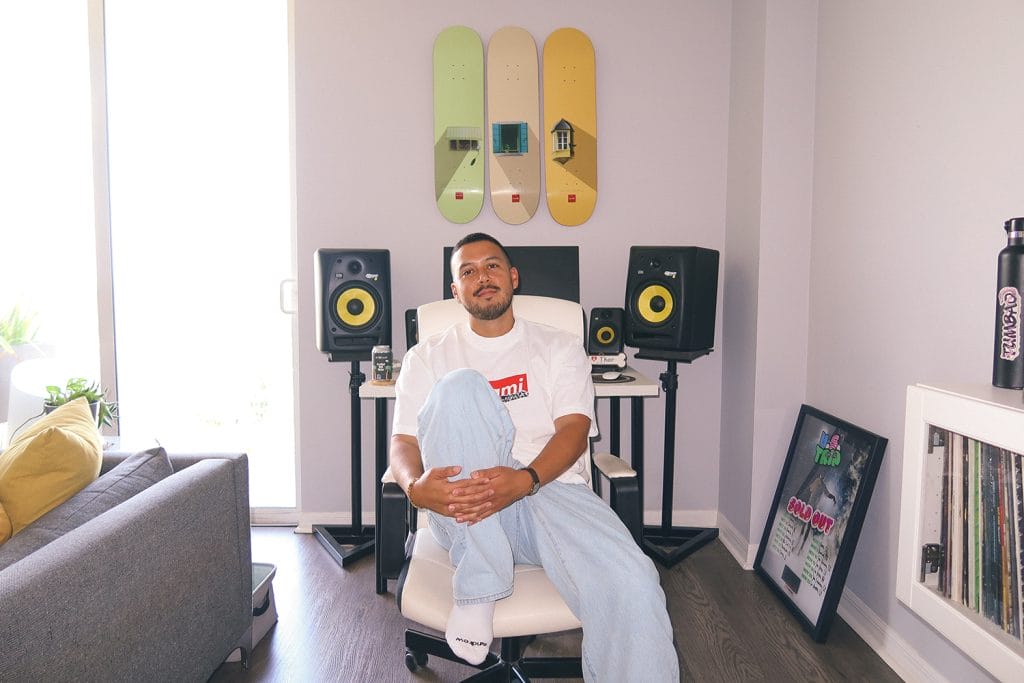TUMBAO has never followed the usual route. Founded in Miami by Albert Piedrahita, it was built around movement—different cultures, different sounds, all feeding the same energy. It started local, grew fast, and now hits cities like New York, LA, Medellín, and Mexico City. At every stop, the setup’s the same. Clean, powerful sound, anchored by KRK monitors.
Piedrahita’s been using KRK gear since his early DJ days. He’d visit friends, hear the ROKITs in action, and start to see the difference. Years later, they’re still the core of his workflow. At home, he’s running ROKIT 8 G4s and the newer Gen 5s. One setup’s for remixing. The other’s for live prep. Every track runs through them. Every idea starts there.
He recently added GoAux to the mix. They’re portable, hit hard, and plug straight into any setup. Bluetooth when he needs speed, interface-ready when it’s time to dial in. They’ve become the go-to for small gigs, hotel room setups, and quick checks before a set. Doesn’t matter if it’s indoors, on the road, or in someone’s living room—they hold the space.
TUMBAO’s sound doesn’t live in one genre. There’s reggaeton, dembow, afro beats, salsa, house. It’s all there, blended and reshaped depending on the city, the crowd, the room. That kind of variety needs gear that doesn’t fall apart in the mix. KRK keeps it consistent. In the studio, at soundcheck, in the booth.
What makes the setup stick isn’t just the performance. It’s how easy it is to trust it. When Piedrahita’s building edits or testing transitions, what he hears is what the crowd’s going to feel. That makes the whole process faster. Less second guessing. Less adjustment between spaces. You dial in once, and you’re set.
The KRK team saw it early. Cesar Acevedo from Artist Relations came out to a TUMBAO event in Miami, watched it play out, and knew it mattered. That kind of support doesn’t happen in every scene. For Piedrahita, it was the right kind of connection—real, responsive, grounded in what he was actually building.

Now three years in, TUMBAO’s running its biggest shows yet. The most recent Miami party pulled the biggest crowd to date and marked their first major sponsor. And as things scale, the workflow stays the same. KRK gear in the studio. KRK gear on-site. Same monitors, same reference points, no surprises.
TUMBAO’s got momentum. The kind that builds from city to city, crowd to crowd. The shows don’t look alike. The lineups shift. But the foundation’s locked. The sound hits the way it’s supposed to—tight, wide, and honest.
That’s what keeps people coming back. That’s what keeps the groove moving.
The post Inside the Sound of TUMBAO: The KRK Monitors Behind the Movement appeared first on Magnetic Magazine.






